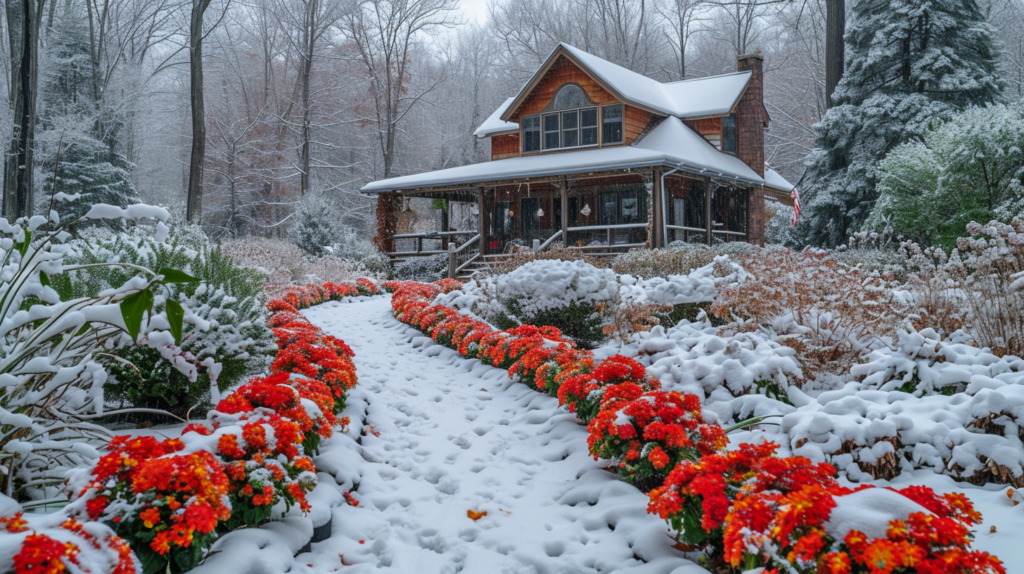As winter approaches, many gardeners start thinking about how to protect their plants from cold temperatures and harsh weather. Implementing some key winter care strategies can help ensure your garden not only survives, but thrives when spring arrives. In this article, we’ll explore some of the best tips for winterizing your garden and caring for your plants during the colder months.

Prepare Plants and Soil for Winter
One of the most important aspects of winter garden care is properly preparing your plants and soil before winter hits. This involves both actively growing plants that will go dormant and overwintering plants that will continue growing.
For actively growing plants, stop fertilizing 6-8 weeks before your first expected frost to discourage new growth. Prune back any diseased or damaged branches and stems to prevent issues from worsening over winter. Clear away any fallen leaves or debris near plants to prevent pests or diseases from overwintering.
Enriching your soil before winter is also key. Add 2-3 inches of compost or other organic material to flower beds and around trees and shrubs. This will improve drainage and provide nutrients for spring growth.
For overwintering plants like peas, spinach and kale, ensure they are in a spot with full sun exposure to remain productive through winter. Stake or trellis tall plants to prevent damage from wind and heavy snow or ice.
Safeguard Perennials Against Freeze Damage
Many perennial plants need extra protection to survive freezing winter temperatures. Tender perennials are the most vulnerable, especially in regions with dramatic seasonal changes. There are several techniques you can use to safeguard perennials from freeze damage:
- Mulch around the base of perennials with 2-4 inches of shredded bark, compost, leaves, or other organic material after the ground has frozen. The mulch insulates the soil and protects roots.
- Wrap or cover perennials with burlap, fabric row covers, or twigs to create a tent-like structure. Avoid plastic since it doesn’t allow airflow and can damage plants.
- Water thoroughly in fall so soil has adequate moisture going into winter. Dry soil worsens freeze damage.
- Prune back dead growth in fall but leave some stems and seed heads for visual interest. Cut back to just above the crown or lowest set of healthy buds.
- Dig up and store very tender perennials in a cool, dark location like a basement or unheated garage until spring. Replant once the danger of frost has passed.
Prune Trees and Shrubs For Winter
Pruning is vital for maintaining the health of trees and shrubs during winter. Follow these tips for proper winter pruning:
- Focus on removing dead, damaged, or diseased branches first when pruning trees and shrubs. This prevents issues from worsening over winter.
- Prune spring-flowering shrubs like lilacs and forsythia soon after they finish flowering. Pruning in fall or winter removes next year’s flower buds.
- Avoid major corrective pruning of deciduous trees in winter. This can stimulate new growth that is vulnerable to cold damage. Make corrective cuts in early spring.
- Prune evergreens like juniper and pine when they are dormant in winter to avoid excessive sap loss from cuts.
- Use clean, sterilized pruning tools and seal large cuts with pruning sealer to prevent diseases and damage.
- Prune on dry winter days above 32°F to avoid cracks and other issues.
Protect Container Plants
Container plants are exposed on all sides and are at high risk for freeze damage. To overwinter container plants:
- Move containers close together on a protected porch or patio area. Place them on insulation or bricks to prevent freeze damage from cold ground.
- Wrap containers with insulation like bubble wrap or burlap. Alternatively, place containers in a cold frame or unheated shed or garage.
- Remove dead annuals and trim back perennials and shrubs leaving 1-2 inches of stem. This prevents whipping in wind.
- Stop fertilizing in fall so plants harden off for winter dormancy. Resume fertilizing when winter dangers have passed.
- Check soil moisture weekly. Water during winter thaws, but avoid overwatering which can damage dormant roots.
With the right preparations and care, you can protect your plants from even the harshest winter weather. Implementing a few simple winter gardening strategies will have your garden thriving once again when spring arrives.
Frequently Asked Questions About Winter Garden Care
Q: When should I start preparing my garden for winter?
A: It’s best to start your winter garden preparations 6-8 weeks before your first expected frost. This gives plants enough time to harden off for dormancy and gives you time to complete tasks like pruning, mulching, and transplanting container plants. Wrap or cover tender plants just before frost arrives.
Q: What type of mulch is best to use in winter?
A: Shredded bark, chopped leaves, compost, or straw all make excellent winter mulches. Look for an organic mulch material that will insulate plant roots without suffocating them. Avoid using plastic sheeting as it prevents airflow. Spread mulch 2-4 inches deep after the ground has frozen solid.
Q: Should I continue fertilizing my garden in winter?
A: Most plants do not need additional fertilizer over winter when they are dormant. In fact, encouraging new growth with winter fertilizing can damage plants when a hard freeze arrives. However, plants that actively grow through winter like spinach, kale and some perennials can be lightly fertilized to support growth. Use half strength fertilizer in late winter or early spring.
Q: How often should I water my garden in winter?
A: Most gardens need little if any extra water over winter when plants are dormant. However, containers and any actively growing plants need regular moisture. Check soil and water during winter thaws, but avoid overwatering dormant plants since excess moisture damages roots. Aim to keep soil slightly moist but not soggy wet.
Q: What kind of winter damage should I prune out of trees and shrubs?
A: The main things to prune are dead, diseased, broken and damaged branches. Pruning out these issues over winter prevents decay and disease. Avoid doing heavy corrective pruning on dormant trees until just after winter. For spring-flowering shrubs, prune immediately after flowering since flower buds form on old wood.
